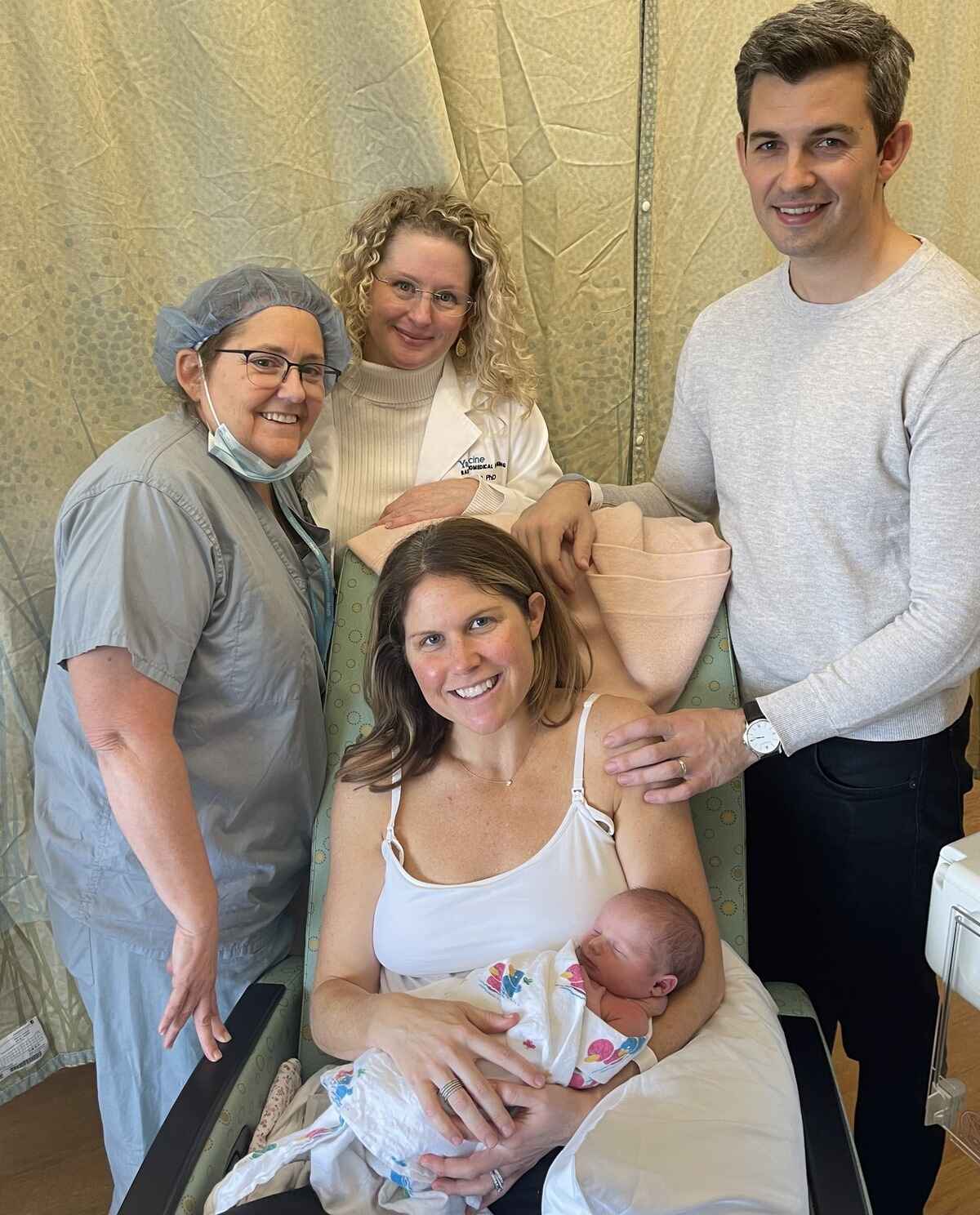
Popular Locations
- Yale New Haven Children's Hospital
- Yale New Haven Hospital - York Street Campus
- Yale New Haven Hospital - Saint Raphael Campus

Published February 10, 2025

When Libby Lindsey, 36, of Darien first learned her newborn would be born with a lymphatic malformation, she was left grappling with uncertainty and fear for her baby’s future.
Mrs. Lindsey received a prenatal ultrasound during her third trimester to monitor the health and development of her baby, which includes checking for potential abnormalities. Her husband accompanied her during the visit, and being a physician himself, noticed the malformation on the scan.
Lymphatic malformation is a rare, non-malignant congenital condition characterized by the abnormal development of the lymphatic system, leading to the formation of fluid-filled sacs (cysts). These malformations can occur in various parts of the body, including the neck, head, abdomen, chest and extremities, and may cause disfigurement, swelling, pain, or functional impairment.
“The finding was so unexpected, and my primary obstetrician advised we immediately get a same day ultrasound at Yale. We weren’t certain what the gravity of the situation was as we made that drive, but we were scared,” said Dr. and Mrs. Lindsey.
That same day, an ultrasound was scheduled for Mrs. Lindsey with Katherine Kohari, MD, associate director, Fetal Care Center, Yale New Haven Children’s Hospital (YNHCH), medical director of YNHH’s Maternal-Fetal Medicine Program and assistant professor of Obstetrics, Gynecology, and Reproductive Services, Yale School of Medicine.
Upon review of the scan, Dr. Kohari scheduled appointments with pediatric surgeons and the Neonatal Intensive Care Unit (NICU) to ensure swift action in managing the malformation.
“They connected me to the experts and the experience was very reassuring despite all the uncertainty. I was impressed by the evidence-based approach, collaborative conversations, and empathy.” added Mrs. Lindsey.
Prior to Mrs. Lindsey giving birth, she had a prenatal MRI to further characterize the cyst and look for other anatomical abnormalities. There are circumstances in which the cyst can affect the newborn’s head and neck region, which can affect breathing. If that is the case, a surgical procedure called the Ex utero intrapartum treatment (EXIT) would be performed to deliver the baby. The procedure involves making an incision in the mother’s uterus and delivering the baby while the placenta still supplies oxygen.

Luckily, that was not the case for Mrs. Lindsey’s newborn. She eventually gave birth to a beautiful and healthy baby girl.
At the time of birth, the cyst was about the size of a lemon. It is part of the natural history of lymphatic malformations that they will grow along with the child.
“The affected side of her shoulder was drooping. She wasn’t moving her neck in a full range of motion. If you let it go on for too long, the baby can develop abnormally,” added Dr. Bass.
With the uncertainty about the long-term impact of the malformation on the infant’s development and breathing, the decision was made to address the cyst sooner than later, when she was only 3 days old.
Stacey Bass, MD, PhD, co-chief of Interventional Radiology, medical director for Pediatric Interventional Radiology and director of the YNHCH Vascular Anomalies Program, met with Dr. and Mrs. Lindsey right away to discuss options. She was able to consult with members of the Vascular Anomalies Program to formulate a coordinated and comprehensive treatment plan.
On the day of the procedure, Dr. Bass brought Baby Girl Lindsey to the interventional radiology suite and placed her in a comfortable position and began anesthesia. The cyst was accessed with a needle and a catheter was placed into the cyst. Through the catheter, a medicine was instilled into the cyst in a procedure called “sclerotherapy.” The medicine helps to stop the cyst from accumulating fluid and eventually shrivels it down into a scar.
After two days of sclerotherapy and some observation time, the catheter was removed, and Baby Girl Lindsey went home with her family. Baby Girl Lindsey’s neck is now symmetrical, and she was left with only a tiny scar from the scab which is expected to fade overtime. She will follow up with Dr. Bass to ensure the malformation does not reform, and if it does, it will be discovered early while treatment is simpler.
“Dr. Bass is incredibly intelligent, resourceful, compassionate, and a true leader in her field,” said Lindsey.
Since the procedure, Baby Girl Lindsey has been doing very well and has passed all her developmental milestones with flying colors. Dr. and Mrs. Lindsey hope that by sharing their story they can contribute to growing knowledge and resources for families to educate themselves about this condition.
Learn more about how YNHH approaches the treatment of lymphatic malformations, including our comprehensive resources and expert care options.